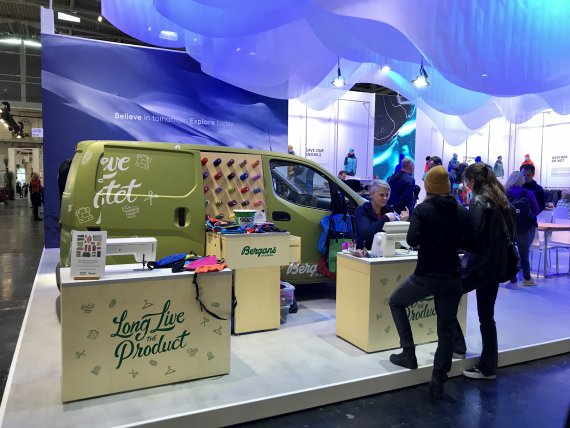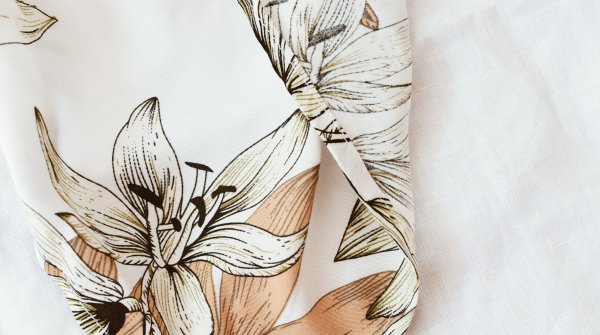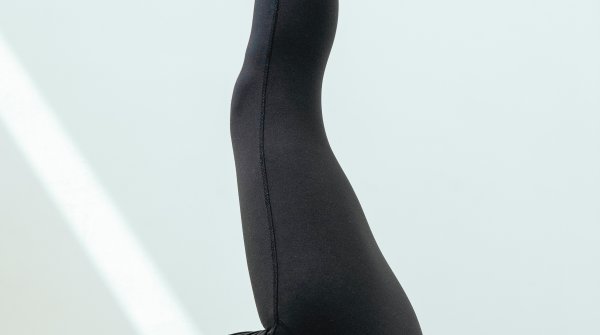
The sports industry is undergoing radical change. Innovation and creativity have always been part of the DNA of the sports industry. However, the fact that competition for the most exciting new developments has now largely shifted to the area of sustainability is new. The range of new bio-based or recycled materials, new product ideas and new solutions for more sustainable consumption was simply impressive at ISPO Munich 2020. Too much greenwashing? Not at all. Sustainability is a process which involves questioning and continuously improving existing production, distribution and consumption models. Fortunately, more and more companies are embarking on this path. Here is a selection of the most exciting new products.
The use of recycled materials is gradually gaining ground. But what about the recyclability of products? The industry is still in its infancy. To solve this problem Bergans of Norway launched a pilot project together with the Finnish bio-fibre producer Spinnova. Spinnova produces cellulose fibres from certified wood, which can again be recycled. The first product is a backpack, which is initially sold in limited quantities to interested consumers. The customers not only buy the backpack but above all its material. At the end of the usage phase, consumers send the rucksack back to Bergans and receive a new product. Spinnova is also working on the possibility of using cellulose from agriculture and biowaste for the fibre.
The recycling of textiles bonded with membranes has so far been a problem. The French snowsports brand Picture Organic Clothing was the first brand to exclusively present a new waterproof, breathable ski jacket with the new Xpore membrane from the Taiwanese high-tech specialist BenQ Materials. The Xpore membrane promises similar performance to other membranes, but is made of polyolefin and contains only carbon and hydrogen. This makes the membrane ecologically interesting in two respects: First, the process is completely solvent-free, as Xpore is stretched mechanically and not chemically. Secondly, since the Xpore membrane contains only hydrogen and carbon, no harmful chemicals or gases are released during thermal treatment for recycling. This means that "it is possible to recycle the Xpore membrane together with textiles without the creation of harmful substances during thermal treatment," says Stella Lin, Digital Marketing Manager at BenQ Materials Corporation. Here you can find out more about the new Xpore membrane.

Pure Waste from Helsinki has managed to source all the input for the collection from recycled materials alone. All products consist of 60 percent recycled cotton, 40 percent recycled polyester from PET bottles. "We would even prefer 100 percent recycled cotton," explains Anders Bengs, one of the brand's founders. "That is in fact not possible at present, because the durability of the products would suffer, which would not be sustainable."
The starting material is production waste from the clothing industry, which is generated during cutting. In order to guarantee consistent quality and colour selection, Pure Waste limits itself to the colours that are most commonly produced in the industry: Black, white, grey and dark blue. The yarns are spun and also sold in their own factory in India. But that's not all: For the first time, products with a 20 percent share of post-consumer cotton and denim have been integrated into the collection. This percentage is to be successively increased. After all, Pure Waste is not just about industrial waste, the company is working with other partners to develop locally applicable recycling solutions for post-consumer textile waste.

The Swedish outdoor brand Houdini has launched a new innovation project with the Mono Air Houdi made from Polartec Power Air. The aim: to further reduce the loss of microfibres in synthetic fleece. Thanks to a special knit construction which releases around five times less fiber than other high-quality fleeces his reduction is possible. Polartec introduced this innovation last year. With the new Mono Air Houdi from Houdini, a new version has now been developed that is around 25 percent lighter and can be worn all year round - as a midlayer or as an outer jacket. The Houdi is named Mono because it is made entirely from one single yarn.

Not only functional clothing needs a sustainable update, also leisurewear. Outdoor supplier Vaude has presented a jacket that is as robust as it is fashionable, made of a material that consists of 55 percent hemp fibres and 45 percent recycled polyester. The good thing about hemp: Hemp is very undemanding to grow and uses little water and no pesticides. The use of recycled polyester, in turn, reduces the consumption of newly produced plastic, thus reducing the ecological footprint and keeps the CO2 balance. In addition, the clever mix of materials has excellent thermal performance and the jacket is also weatherproof thanks to a waxed surface.

Patagonia has sustainably improved its Nano Puff Jacket and is the first brand partner to present the manufacturing technology of PrimaLoft P.U.R.E.. PrimaLoft P.U.R.E., which stands for 'Produced Using Reduced Emissions', reduces carbon emissions during the insulation manufacturing process by up to 48 percent. Normally, heat is required in the manufacture of insulation fillings to melt the binding fibres that ensure the stability of the insulation. P.U.R.E. technology achieves this strength without the need for melting, which removes the heat from the process. By using the new manufacturing process and by using 100 percent recycled PrimaLoft fibers, the new Nano Puff Jacket achieves a drastically smaller CO2 footprint.

- Awards
- Mountain sports
- Bike
- Fitness
- Health
- ISPO Munich
- Running
- Brands
- Sustainability
- Olympia
- OutDoor
- Promotion
- Sports Business
- Textrends
- Triathlon
- Water sports
- Winter sports
- eSports
- SportsTech
- OutDoor by ISPO
- Heroes
- Transformation
- Sport Fashion
- Urban Culture
- Challenges of a CEO
- Trade fairs
- Sports
- Find the Balance
- Product reviews
- Newsletter Exclusive Area
- Magazine






